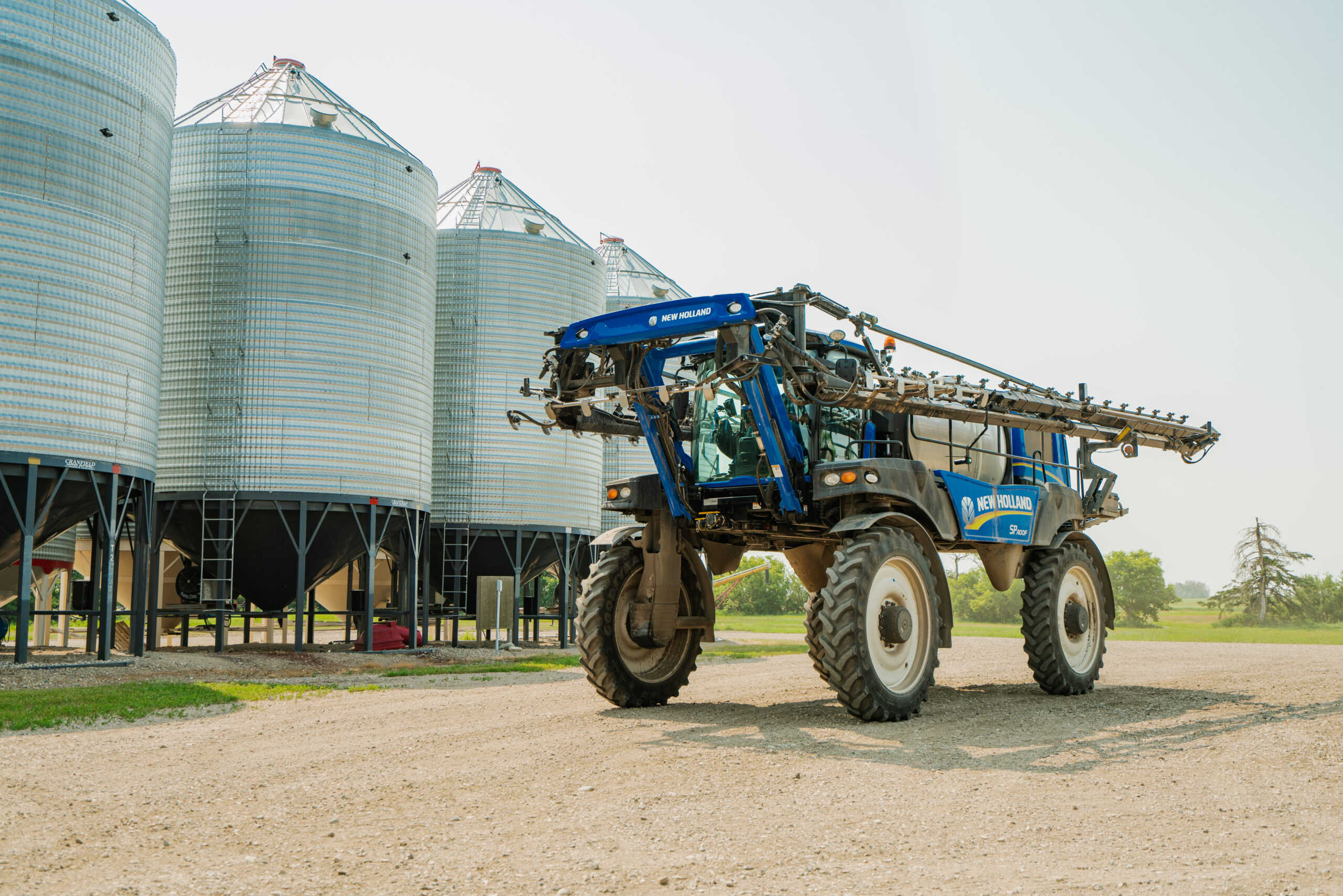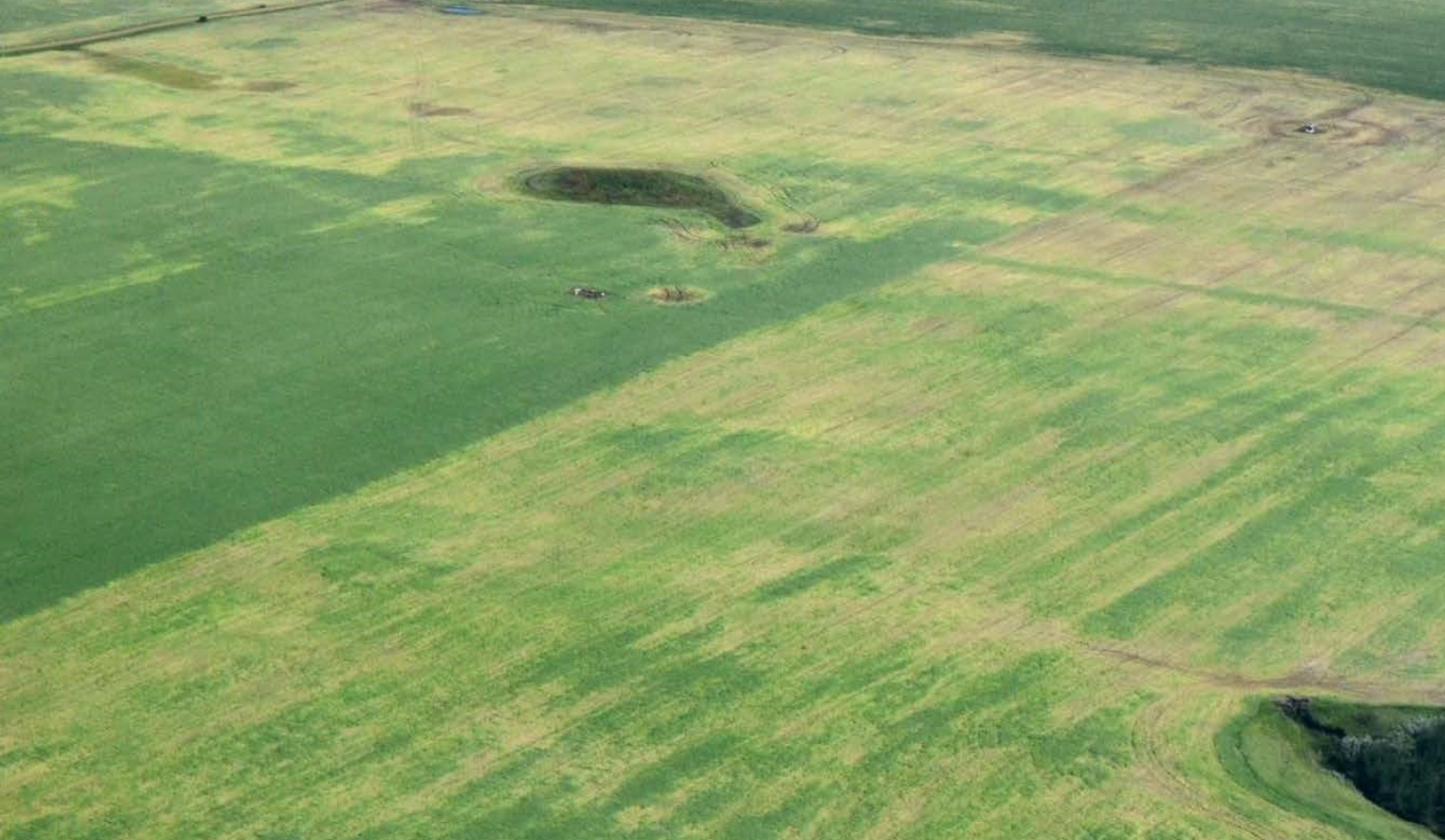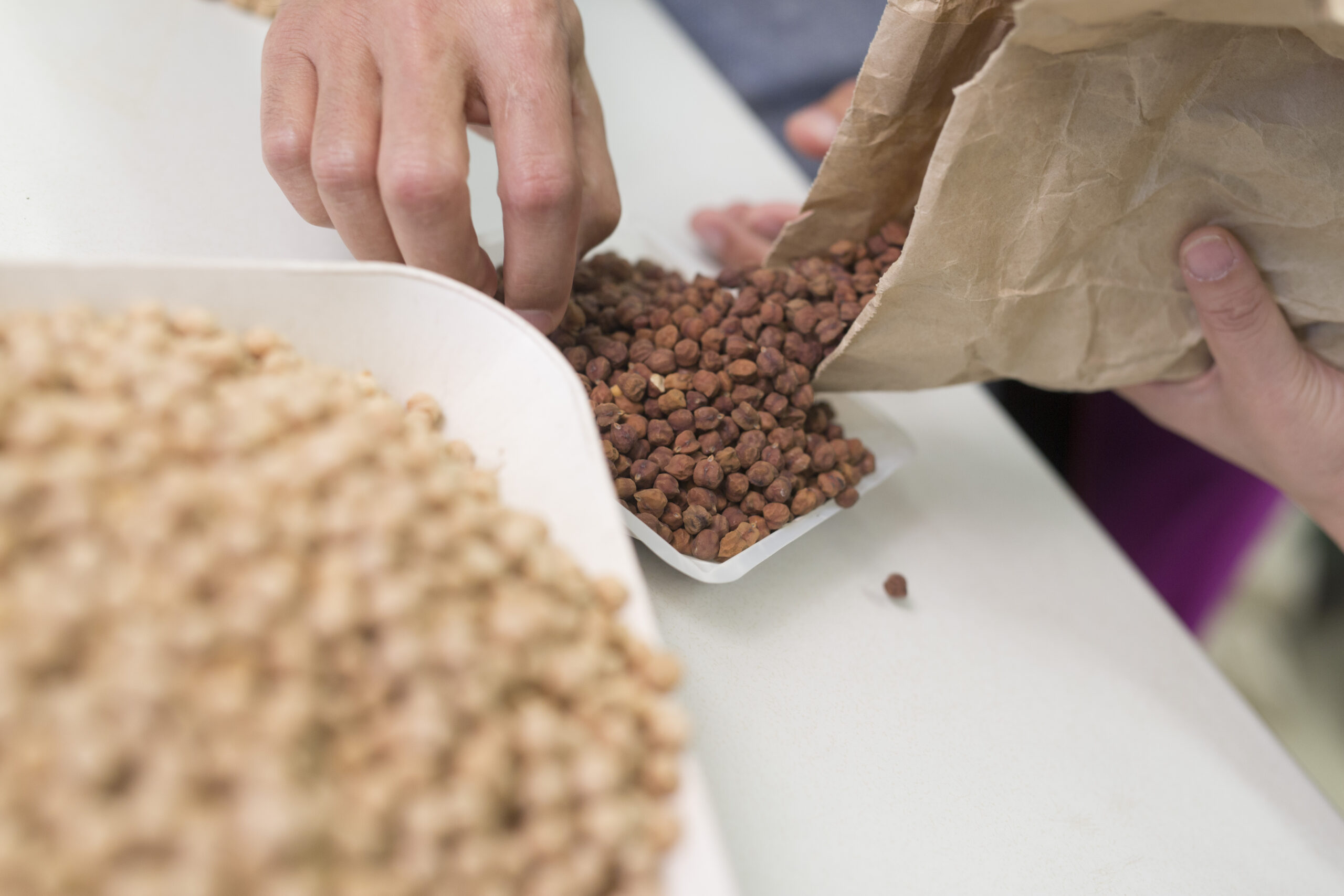By Jennifer Bogdan, P.Ag, CCA
Summary
A mutualistic relationship appears to exist between the root rot pathogen Fusarium avenaceum and pea leaf weevil in field peas. Pea leaf weevil larval feeding on the root increased the severity of Fusarium root rot infections. In addition, the number of pea leaf weevil larvae that survived to the pupal stage increased when Fusarium was present. These findings indicate that both pests perform better when they exist together compared to when they act on pea plants independently. Due to the increased risk of yield loss, integrated crop management practices are necessary in areas where F. avenaceum and pea leaf weevil co-exist.
Introduction
According to surveys conducted in Alberta in 2017, approximately one-third of fields showed symptoms of both root rot and pea leaf weevil (Sitona lineatus) feeding injury. Synergistic relationships have already been observed between related pest species in alfalfa – the clover root curculio (Sitona hispidulus) and Fusarium oxysporum. Since Fusarium root rot and pea leaf weevil life cycles overlap on the Prairies, researchers wanted to investigate the collective impact of these pests in field peas and evaluate integrated crop management strategies to mitigate their damage in peas and faba beans in the field.
Greenhouse Experiment
Greenhouse experiments were set up in a controlled environment as a basis for further research in the field. Fusarium avenaceum was chosen as the root rot pathogen due to its high virulence on field peas. In recent disease surveys, F. avenaceum was also the most common Fusarium root rot species in Western Canada. The pea cultivar CDC Meadow is susceptible to Fusarium root rot and was used in all trials. Seeds were inoculated with Fusarium spores at a level that resulted in moderate disease symptoms. A granular inoculant was used to enhance nodule production.
Four treatments were used for the experiment: (1) a control, with no Fusarium or pea leaf weevil larvae; (2) Fusarium only; (3) pea leaf weevil larvae only, and; (4) Fusarium and pea leaf weevil larvae. The pea plants were grown until the start of flowering, coinciding with peak nodule activity, approximately 6.5 weeks after planting. This growth period allowed for 2-3 weeks of pea leaf weevil egg-hatching, followed by four weeks of larval feeding. Disease severity, nodulation efficiency, herbivory (larval feeding), and pea leaf weevil larvae survivorship were evaluated. Nodulation efficiency was measured using an index assessing plant vigour, nodule number, leghemoglobin production (based on visual nodule colour estimate), and nodule position on the root.
Fusarium Root Rot Damage Worse When Pea Leaf Weevil Larvae Present
There was a significant increase in root rot severity when both Fusarium and pea leaf weevil larvae were present compared to Fusarium alone (Figure 1). Fusarium species are opportunistic in nature and infect their host when the plant has experienced a weakness or stress. The wounds caused by pea leaf weevil larval feeding on the root nodules likely serve as an entry point for Fusarium to enter and infect the root system.

Source: Willsey et al., 2019.


Total nodulation efficiency was affected only by pea leaf weevil larval feeding, not by Fusarium, and this impact was the strongest when larvae were present with Fusarium. The results from the individual components of the nodulation efficiency index showed:
- Plant vigour was decreased significantly only when both Fusarium and pea leaf weevil larvae occurred together
- Feeding injury from pea leaf weevil larvae had the biggest impact on nodule numbers. The production of leghemoglobin, the protein that carries oxygen to the Rhizobium bacteria in the nodules, was lowest when pea leaf weevil larvae were present with Fusarium
- Nodule position on the root system also changed significantly when both Fusarium and pea leaf weevil larvae were present, with nodules being concentrated at the crown and no nodules produced on the lateral roots, compared to crown and lateral nodule production observed in the control and Fusarium only treatments

Source: Willsey et al., 2019.
The number of nodules per plant (abundance) declined when pea leaf weevil larvae were present; Fusarium alone did not lead to fewer nodule numbers. A significant decrease in nodule abundance occurred when both pea leaf weevil larvae and Fusarium were present, compared to pea leaf weevil larvae alone (Figure 2).
Due to a reduction in nodule efficiency and nodule abundance from pea leaf weevil larval feeding, nitrogen fixation by the plants was likely reduced. The inability to access nitrogen may have caused an additional stress on the plants, thereby making the plants more susceptible to Fusarium root rot infection.
More Pea Leaf Weevil Larvae Pupate When Fusarium Present

Source: Willsey et al., 2019.
The survival of pea leaf weevil larvae increased significantly when Fusarium was also present on the pea plants. More pea leaf weevil pupae were recovered from the Fusarium-infected plants compared to the uninfected plants (Figure 3). One hypothesis for this observation was that the pea plants overcompensated for the larval feeding by increasing the size of existing nodules, which has been shown to occur in other studies. This increase in nodule mass would provide more food for the pea leaf weevil larvae, increasing their success in reaching pupation.
A second hypothesis is that F. avenaceum degraded a defence compound that would normally discourage insect feeding. Pisatin is a phytoalexin produced by pea plants when under attack and this compound has been shown to deter feeding of some beetle species. Several Fusarium species common in Western Canada, including F. avenaceum, F. graminearum, F. solani, and F. oxysporum, have the ability to break down pisatin, which would allow more pea leaf weevil larvae to successfully pupate.
Integrated Crop Management Field Trials
Field trials were set up to assess integrated crop management techniques used for protection against root rots and pea leaf weevil. The efficacy of ethaboxam (INTEGO™ Solo) and fludioxinil (Apron Maxx®) fungicides, lambda-cyhalothrin (Matador®) and thiamethoxam (Cruiser®) insecticides, and a high nitrogen fertilizer treatment (46 kilograms of nitrogen per hectare, or 41 pounds of nitrogen per acre) were evaluated as single and combined treatments. Field trials were established in 2016 (Lethbridge, Taber, and Vauxhall) and 2017 (Lethbridge and Taber) using field peas and faba beans as host crops.
Neither fungicide was able to consistently control root rot caused by Fusarium avenaceum, F. solani, or Aphanomyces euteiches. This observation could be due to the fungicide treatments being evaluated later, at the 7-node stage, rather than at earlier plant growth stages.
Thiamethoxam was very effective in reducing adult pea leaf weevil feeding on leaves as well as larval feeding on nodules in both peas and faba beans. At the Lethbridge site in 2017, which experienced high pea leaf weevil pressure, nodule damage at the 7-node stage was reduced by up to 68% in peas and 55% in faba beans, and larval numbers dropped by up to 78% in peas and 88% in faba beans.
Thiamethoxam seed treatment was effective in protecting peas and faba beans from pea leaf weevil nodule damage during the vulnerable 2 to 5-node stages, with protection lasting into the flowering stage. In contrast, lambda-cyhalothrin (Matador®) showed very little reduction in foliar and nodule feeding damage, is very hard to time a proper application (before the adult weevils lay eggs or after migration has ended), and is not recommended as an effective strategy in managing pea leaf weevil.
The greenhouse study showed increased Fusarium root rot severity when pea leaf weevil larvae were present. However, in the field, even though thiamethoxam reduced the amount of pea leaf weevil nodule feeding damage, disease severity did not decrease and still remained high. This is likely due to the complex of root rot pathogens causing root rot in pulse crops. Despite thiamethoxam having a large impact on nodule preservation, there was no yield difference observed in either peas or faba beans, also attributed to the high amount of root rot.
The nitrogen fertilizer treatment was used to encourage plants to produce less nodules, thereby reducing the food supply for PLW lar- vae. Urea generally did not impact nodulation, and so did not affect nodule feeding damage or yield in either peas or faba beans, and is not recommended as a viable pea leaf weevil management option.
Key Findings
- Fusarium avenaceum and pea leaf weevil share a mutualistic relationship in field peas
- Fusarium root rot severity in pea is worse when pea leaf weevil larvae are present
- Pea leaf weevil larvae have a higher survival rate when Fusarium is present
- Thiamethoxam (Cruiser®) seed treatment is effective in reducing foliar and nodule feeding by pea leaf weevil. However, due to the complex of root rot pathogens that infect peas and faba beans in the field, disease severity, and consequent yield loss, can still be high
Acknowledgements
Research was funded by Agriculture and Agri-Food Canada through the Growing Forward 2 Pulse Science Cluster, and by Alberta Pulse Growers, the Alberta Crop Industry Development Fund (ACIDF), and the Western Grains Research Foundation.
- Willsey, T., Chatterton, S., & Cárcamo, H., 2019. Interactions between the root rot pathogen Fusarium avenaceum and the pea leaf weevil (Sitona lineatus) in field pea. Crop Protection, 116, 108-114.
- Willsey, T., 2018. Interactions of root rot pathogens and pea leaf weevil in field pea. MSc Thesis, Department of Biological Sciences, University of Lethbridge School of Graduate Studies, July 2018.




